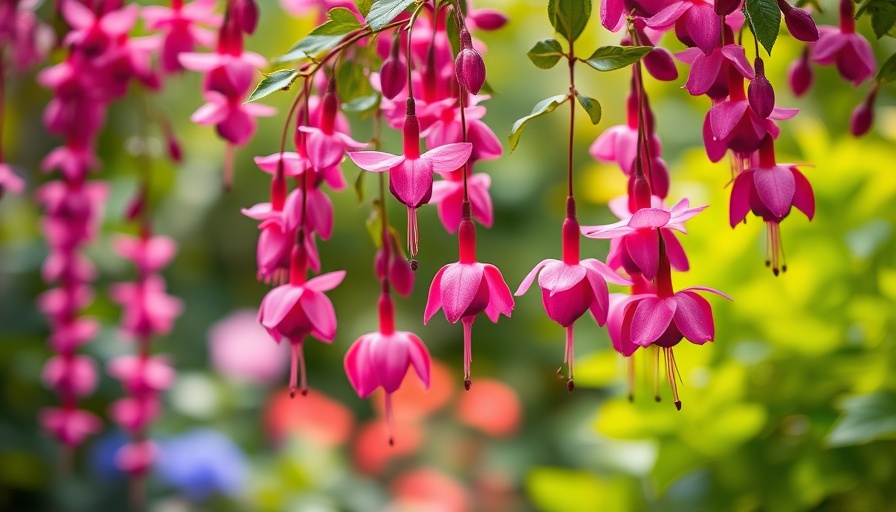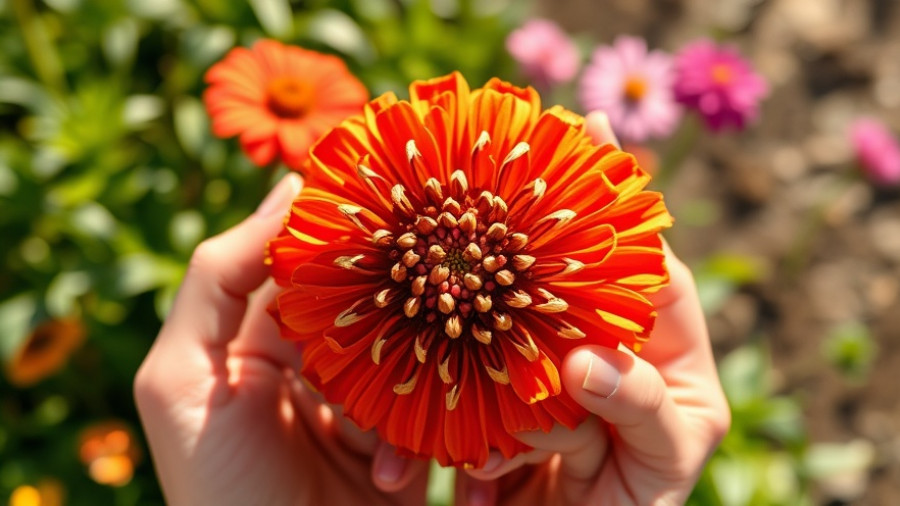
Discovering the Allure of Trailing Fuchsia
Trailing fuchsia is the jewel of any shaded garden space, bringing a stunning pop of colors that enchants the eye and attracts pollinators like hummingbirds and butterflies. These exotic blooms dangle gracefully from their stems, creating an eye-catching spectacle in hanging baskets and containers.
With a plethora of varieties available, fuchsia is particularly well-suited for brightening shady spots in your yard. It can stand alone as a dramatic single specimen or combine beautifully with other plants like impatiens, coleus, and ferns. The profusion of flowers begins in early summer and continues, often spilling into the autumn, making it a favorite among garden enthusiasts.
Types of Fuchsia: What to Know
Fuchsia is divided into two primary categories: hardy and tropical. Hardy fuchsia varieties, like Fuchsia magellanica, are rugged and can withstand colder temperatures, thriving in USDA zones 6 to 10, while tropical fuchsias, such as Fuchsia x hybrida, prefer milder climates (zones 9-12).
While hardy types generally grow upright and can reach heights of 2 to 6 feet, the trailing tropical varieties offer a more whimsical beauty, growing low and sprawling. Their vibrant, colorful blooms come in various shades of red, purple, pink, and white, often attracting various pollinators.
Optimal Care for Trailing Fuchsia
To ensure your trailing fuchsia flourishes, they need bright, indirect light, situated out of direct sunlight to keep their blooms vibrant. It's essential to plant them in nutrient-rich soil and maintain consistent moisture levels—though established plants can handle slight drought. Regular pinching and pruning promote bushier growth and a more abundant flowering period.
As winter approaches, those growing fuchsia in containers can bring them indoors, although overwintering requires diligence, and it can be challenging to maintain their health through the colder months.
Showcasing Featured Varieties
Katherine Rowe, a gardening expert, recommends a few standout varieties for your hanging baskets. Among these, ‘Swingtime’ shines with its delicate cerise-pink petals and modest height ranging from 2-3 feet. Its hardiness zones stretch from 9 to 11, making it ideal for warmer climates.
Each variety showcases distinct characteristics and charm, providing a lovely spectacle that can enhance the visual appeal of any outdoor living space. Whether creating a serene nook in your backyard or adding flair to a garden party, these fuchsias offer endless possibilities.
Embrace the Joy of Fuchsia This Season
Incorporating trailing fuchsia into your garden can inspire vibrant outdoor transformations. Not only do they grace your space with elegance, but their ability to attract pollinators cultivates a lively ecosystem, further enhancing the natural beauty of your yard.
Plus, they pair beautifully with various container gardening designs, making them a versatile choice for those keen on backyard makeover ideas or creating an inviting outdoor kitchen. So, if your outdoor living space is looking to be spruced up, consider these exquisite hanging fuchsias today!
Getting Started with Container Gardening
If you’re new to container gardening, start by selecting the right pots—ensure they have good drainage holes. Fill them with a quality, organic potting mix to provide your plants with essential nutrients. Regular watering will encourage strong growth, but be mindful not to let them sit in water.
With their astonishing adaptability and enchanting blooms, trailing fuchsia varieties can elevate the aesthetics of any garden narrative you wish to create. As you plan for your gardening journeys ahead, remember to embrace these beautiful plants as contributors to your outdoor haven!
 Add Row
Add Row  Add
Add 




Write A Comment